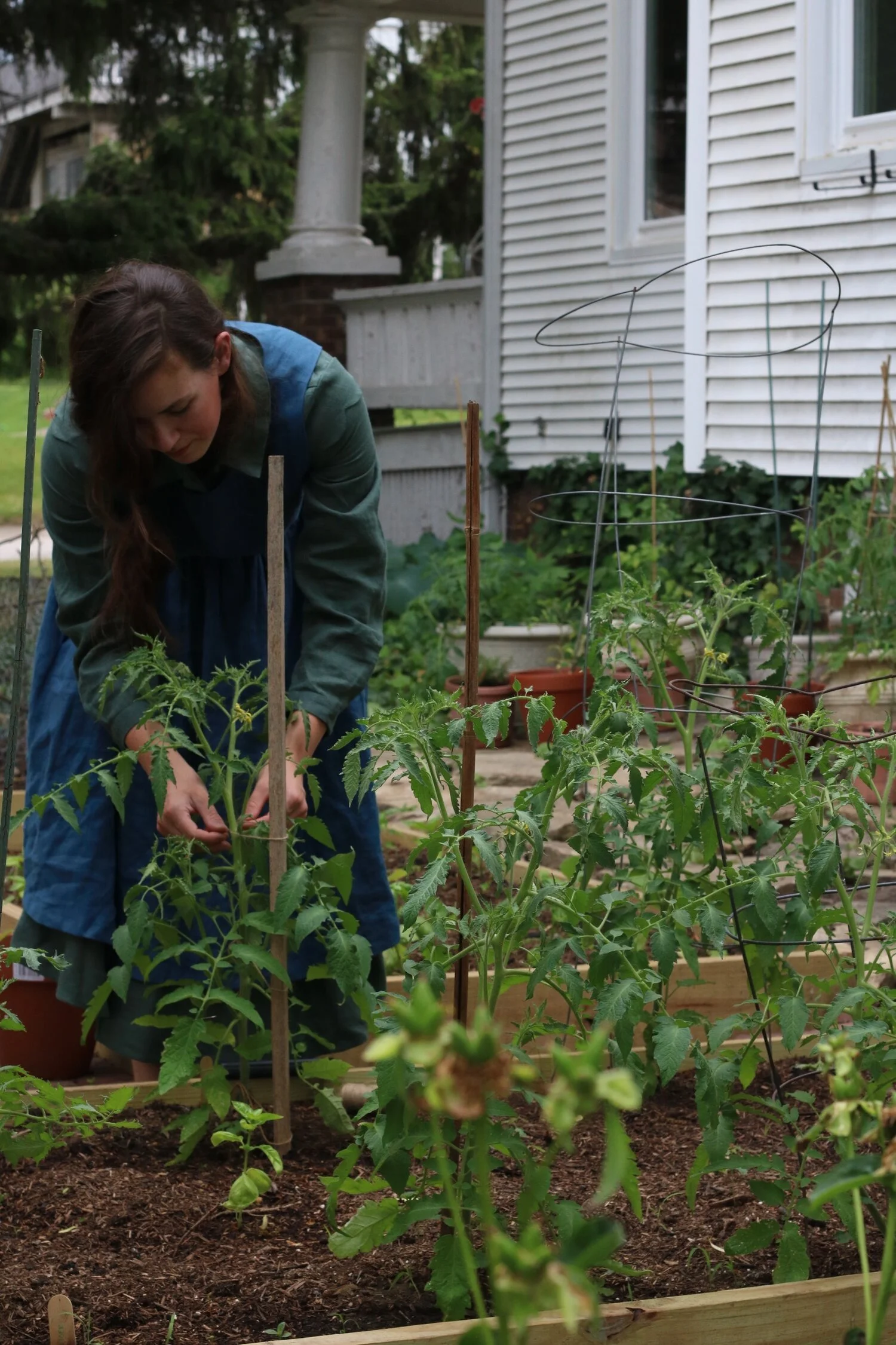Trellising & Training Tomatoes
For many years, I would not take the time to train my tomatoes. As a farmer operating a 1 acre field of vegetables, 80% of the time alone, I had good intention to stake them or use cages, but I would tend to fall short by late June to July. They were overwhelmingly large and long and taking over their rows. Training and trellising tomatoes is necessary, especially for indeterminate types. These can grow up to 7 feet tall! While you can let tomatoes go on their own naturally, just like many plants, by pruning and training you can end up doubling your yield.
options for trellising tomatoes:
Cages. This is the most commonly used method for housing tomato plants. It is easy and foolproof, no pruning required (though it does help). Tomato cages are placed over the top of your plant right around when they are planted, or at least that is the best timing to allow them to grow up into the cage without accidentally breaking off leaves or disturbing the roots. Cages can be made from metal, bamboo, or simply sticks and some twine. You can get really creative with this if you want a more rustic look!
Stakes. Staking tomatoes is another fairly simple method for growing tomatoes, though it takes a little more work. Like cages, it’s best to put in your stakes around the same time that you transplant your tomatoes to ensure you do not disturb the roots. With twine or a malleable tie (there is special twist tie for tomatoes sold at most nurseries), begin by tying around the stalk of your tomato plant and the stake, leaving plenty of room for the stalk to continue growing, but taught enough so the tomato remains growing upright.
Trellis. Tomatoes can also be grown on a rope trellis, twine, or chord much like peas and beans. This would be a structure you would have to build yourself, and it’s one of the more difficult options because the tomatoes must be trained to grow vertically rather than bushing out. Another option that we have used on the farm is hog paneling or placing out stakes and placing entire lengths of rope in between them, almost like a fence!
training tomatoes:
Start training when plants are young. It’s best to do this about a month after transplanting. Begin by tying your tomato to the structure of choice every 6-8 inches up the length of the plant from the main stalk. It is best to tie right above a cluster of flowers because the stalk may become pinched as the flowers develop into heavy fruit.
Remove bottom leaves to at least 4 inches above the surface of the soil. Tomatoes often get soil borne diseases from the splash back of the soil when watering.
To maintain a single stem: If you are using stakes or a trellis, you will want to train the plant to only have one main stem and no side shoots. This is done by removing the suckers from the plant, or the stems that begin to grow in the crotches of the leaves attached to the main stalk. These will each become their own stem and produce fruit. To prune these, simply snap off the sucker with your fingers, carefully.
If using cages, grow multiple stems. Tie the multiple stems to the cage or whichever structure you are using to give them support. You want about 3-4 stems for one plant for this method, so pinch back any others that start to grow. You will get much bigger and better fruit!
Before it gets cold, you can get an extra boost of fruit from the plant by pinching back the top of most cluster of flowers from each stem. The plant will put all of its energy in ripening the last bit of fruit before frost comes.
My tomatoes this year are so large and beautiful! I don’t think I have ever had more beautiful plants; I hope they stay that way for the season. You never know what can happen! I have several training methods I am using this season, so I am looking forward to seeing which I like best. It has been lovely to have the opportunity to experiment a bit more with trellising now that the garden is much smaller.
xoxo Kayla












